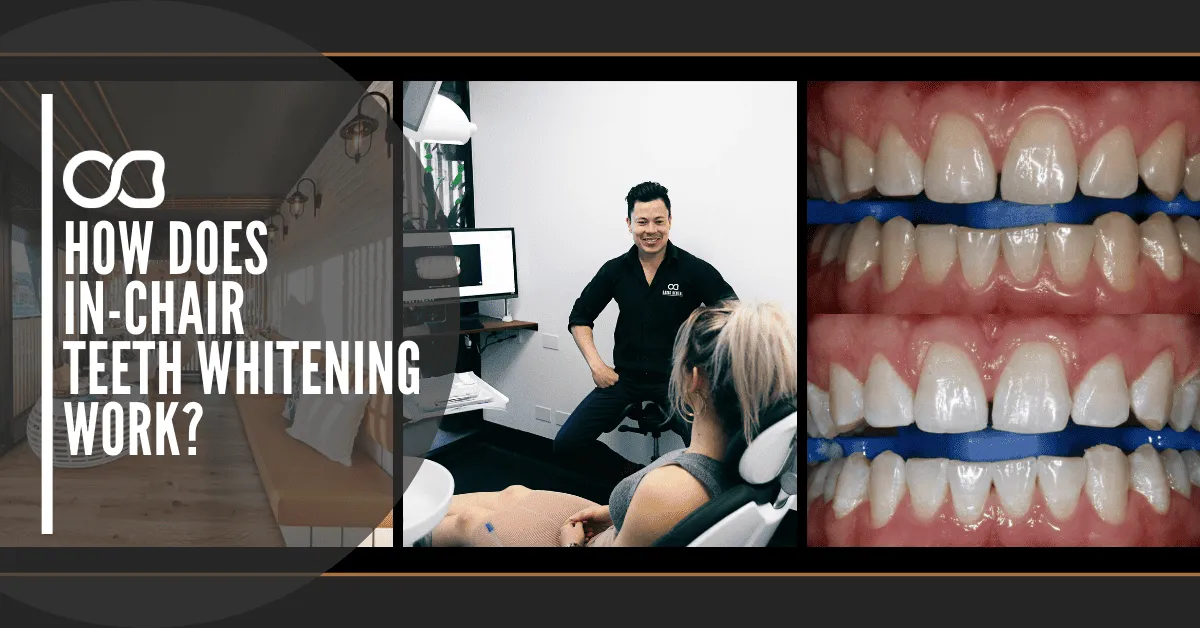What is Teeth Whitening in Chair
Teeth whitening in chair, also known as in-office teeth whitening, is a cosmetic dental procedure designed to lighten the color of your teeth. Unlike over-the-counter whitening products, this treatment is performed by a dental professional in a clinic setting, ensuring a safe and effective process. The primary goal of this procedure is to remove stains and discoloration caused by factors such as aging, food, beverages (like coffee, tea, and red wine), and tobacco use. It’s a popular choice for individuals looking to quickly and noticeably improve their smile. The process typically involves the use of a high-concentration bleaching agent and a special light to accelerate the whitening process, delivering significant results in a single visit.
The Teeth Whitening in Chair Procedure Step by Step
The in-chair teeth whitening procedure is a carefully orchestrated process that prioritizes both effectiveness and patient comfort. It usually takes about an hour to complete, including preparation and the whitening treatment itself. This comprehensive guide will walk you through each step, explaining what to expect and how the procedure works. From initial consultation to post-treatment care, understanding each stage can help alleviate any anxiety and ensure you are well-prepared for achieving a brighter, more confident smile. This step-by-step breakdown ensures you’re fully informed about what happens during your teeth whitening appointment and how it contributes to a radiant and healthy smile.
Consultation and Preparation
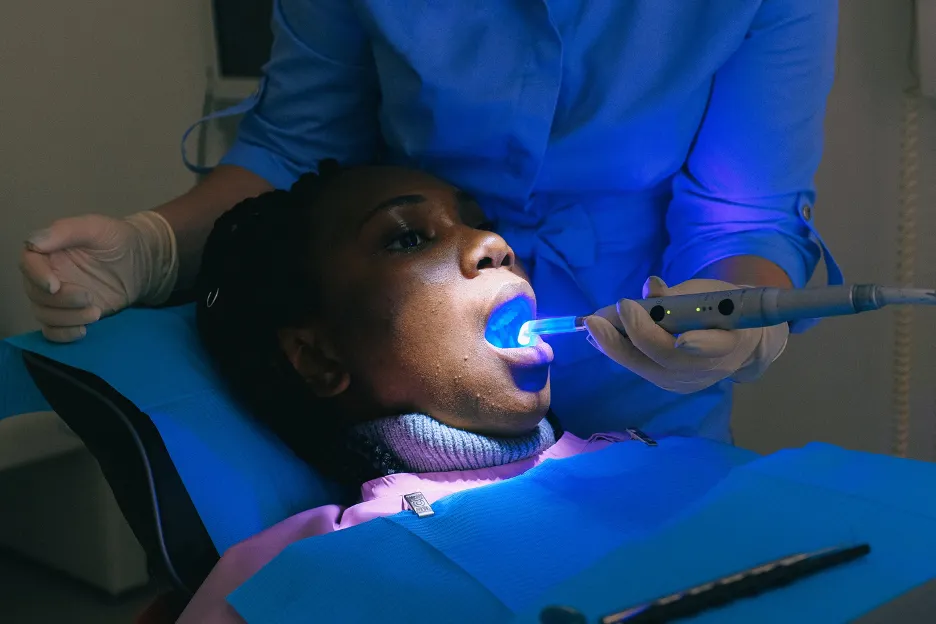
Before the teeth whitening procedure begins, a thorough consultation with your dentist is essential. This initial step involves an examination of your teeth and gums to assess your oral health and determine if you are a suitable candidate for the treatment. The dentist will discuss your expectations, explain the procedure, and address any questions or concerns you may have. Preparation also includes taking a shade assessment to document the current color of your teeth, which serves as a baseline for measuring the whitening results. Protecting your lips and gums is a crucial step to avoid irritation from the whitening agents, often using a protective barrier or a rubber dam to isolate the teeth.
Professional Cleaning and Evaluation
Before applying the whitening agent, your dentist will perform a professional cleaning. This is an important step to remove plaque, tartar, and any surface stains that could hinder the effectiveness of the whitening treatment. The cleaning ensures that the whitening agent can penetrate the enamel and reach the underlying stains more effectively. The dentist will then evaluate your teeth for any existing dental work, such as fillings or crowns, as these materials do not whiten in the same way as natural teeth. This evaluation helps in managing expectations and determining the most appropriate whitening approach to achieve the best possible results, leading to a more uniform and aesthetically pleasing outcome.
Applying the Whitening Agent
The core of the teeth whitening in chair procedure involves the application of a high-concentration hydrogen peroxide or carbamide peroxide bleaching agent. The dentist carefully applies the whitening gel to the surface of your teeth, ensuring that each tooth is evenly covered. The concentration of the bleaching agent used in-office is much higher than what is available in over-the-counter products, allowing for faster and more dramatic results. To protect your gums and soft tissues, a protective barrier is applied around the gum line. The application process is meticulously controlled, ensuring that the gel stays in contact with the teeth for a specific amount of time to achieve the desired whitening effect.
Using the Special Light
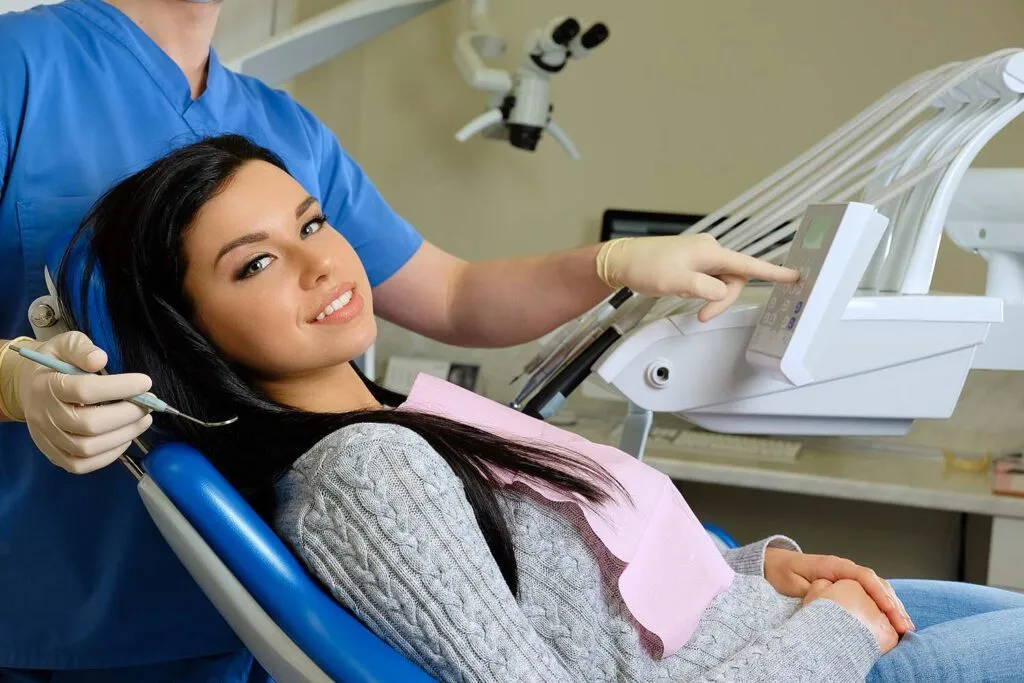
Many in-chair teeth whitening procedures incorporate a special light, such as a UV or LED light, to enhance the whitening process. This light acts as a catalyst, accelerating the chemical reaction of the whitening agent. The light helps to break down the stain molecules, resulting in a faster and more effective whitening process. The dentist carefully positions the light to ensure that all treated teeth are exposed to the light, which is typically applied in intervals of 15-20 minutes. During this stage, you may be asked to wear protective eyewear to shield your eyes from the intense light. The use of this specialized light can significantly boost the whitening effectiveness and reduce the overall treatment time, leading to a brighter, more vibrant smile.
After the Teeth Whitening in Chair Procedure
Once the whitening treatment is complete, your dentist will remove the protective barriers and rinse your teeth thoroughly. You’ll immediately notice a difference in the brightness of your teeth, although the final results may take a few days to fully develop. After the procedure, it’s essential to adhere to specific aftercare instructions provided by your dentist. These guidelines help to minimize any potential side effects and maximize the longevity of your results. You will be advised on what foods and drinks to avoid and how to maintain your newly whitened smile. Following these steps will ensure the longevity of your bright smile and the continued health of your teeth.
Immediate Post-Treatment Care
Following an in-chair teeth whitening procedure, it’s important to be mindful of the immediate aftercare instructions provided by your dentist. You might experience some sensitivity in your teeth for a few days after the treatment; this is a common side effect and usually subsides quickly. Avoid consuming highly pigmented foods and beverages such as coffee, tea, red wine, and dark berries for the first 24-48 hours, as they can stain your freshly whitened teeth. You should also refrain from smoking, as it can diminish the whitening results. During this period, your dentist may recommend using a toothpaste designed for sensitive teeth to ease any discomfort.
Long-Term Maintenance Tips
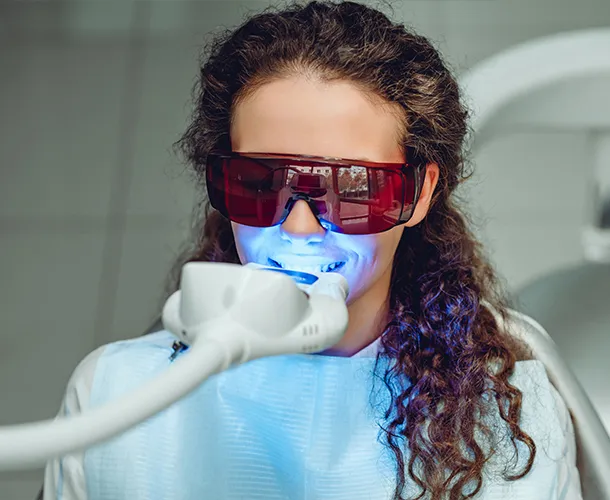
Maintaining your bright, white smile requires a combination of good oral hygiene and some lifestyle adjustments. Regular brushing with a whitening toothpaste, flossing daily, and using a mouthwash can help prevent stains from reappearing. Regular dental check-ups and cleanings are also crucial to maintain the results of your in-chair teeth whitening. You can also consider at-home touch-up treatments, such as using whitening strips or trays recommended by your dentist, to keep your smile looking its best. Being mindful of your diet and limiting the consumption of staining foods and drinks, as well as avoiding tobacco products, will significantly contribute to the longevity of your brighter smile.
Potential Risks and Side Effects of Teeth Whitening in Chair
While teeth whitening in chair is a safe and effective procedure, it’s important to be aware of potential risks and side effects. These are generally temporary and manageable, but understanding them can help you make informed decisions. It’s essential to discuss any concerns with your dentist before undergoing the procedure. Your dentist can assess your oral health, explain the potential risks, and help you understand how to manage any side effects. Being prepared for the possibility of these side effects ensures you are well-informed and can make the best decision for your dental health and cosmetic goals, allowing for a smoother and more comfortable experience.
Sensitivity and Discomfort
Teeth sensitivity is a common side effect of in-chair teeth whitening. You may experience increased sensitivity to hot and cold foods and beverages for a few days after the procedure. This happens because the whitening agent can temporarily open the pores in your enamel. This sensitivity is usually temporary and resolves on its own within a few days or weeks. Using a toothpaste designed for sensitive teeth can help alleviate discomfort. Your dentist may also recommend other treatments, such as fluoride applications, to help reduce sensitivity. Avoiding extremely hot or cold items immediately after the procedure can also help to minimize any discomfort.
Gum Irritation
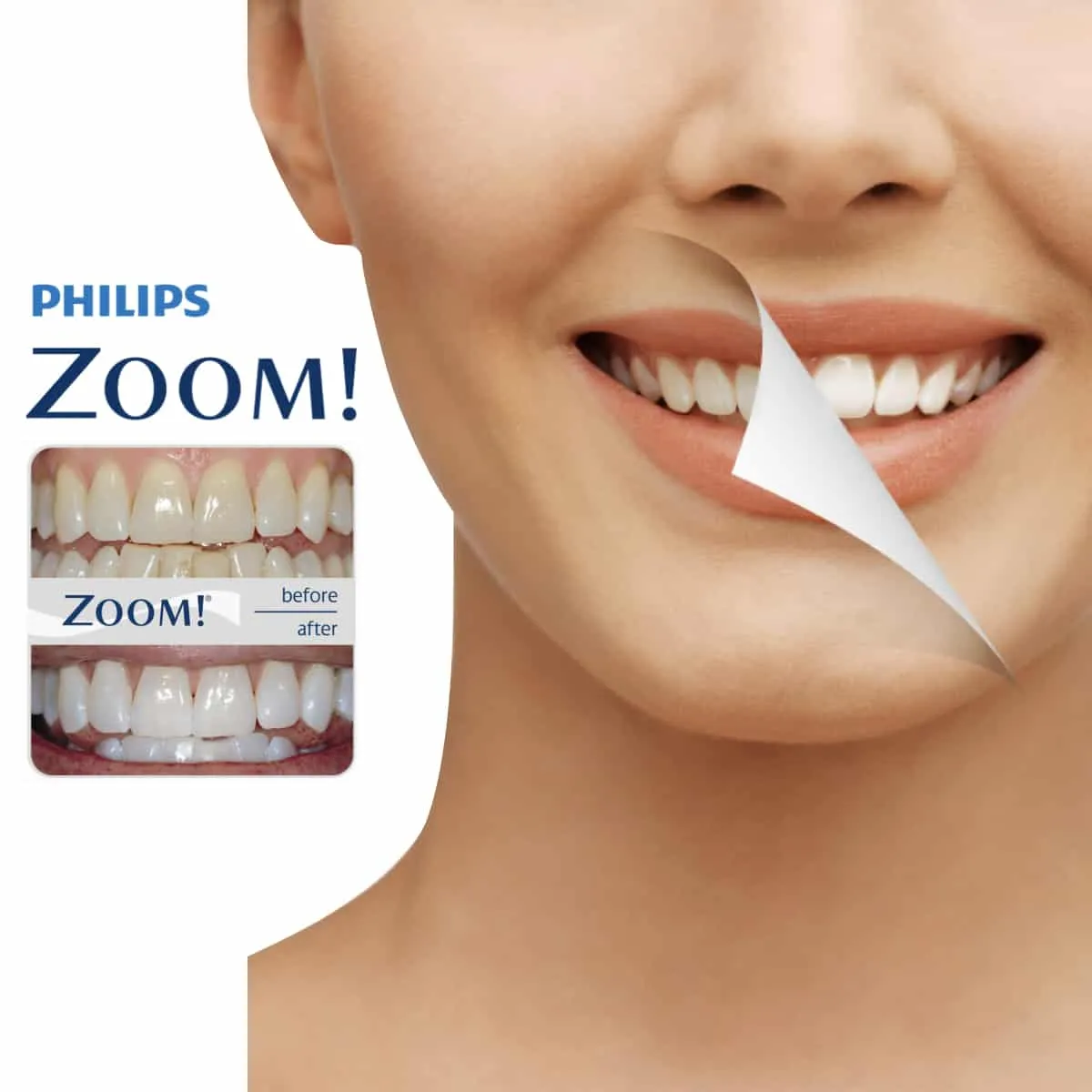
Gum irritation is another potential side effect of teeth whitening in chair. The high concentration of the bleaching agent can sometimes cause irritation or inflammation of the gums, especially if the protective barriers are not perfectly applied. This can manifest as redness, swelling, or soreness. The irritation is usually mild and temporary, resolving within a few days. Your dentist will take precautions to minimize gum contact with the whitening agent, such as using protective barriers. Rinsing your mouth with lukewarm salt water can help soothe the gums. If the irritation persists or worsens, consult your dentist, who may prescribe a topical anti-inflammatory medication.
Effectiveness and Results of Teeth Whitening in Chair
Teeth whitening in chair is highly effective, delivering noticeable results in a single session. The process can dramatically lighten the color of your teeth, often by several shades. The effectiveness of the treatment depends on various factors, including the type and severity of the stains, as well as the individual’s natural tooth color. Results can vary, but many patients experience a significant improvement in their smile’s brightness. The long-term outcome is also contingent on post-treatment care and lifestyle choices. Following your dentist’s recommendations regarding diet and oral hygiene is crucial for maintaining the whitening effects for an extended period.
Factors Influencing Whitening Results
Several factors can influence the effectiveness of in-chair teeth whitening. The type of stains present on your teeth plays a significant role. Surface stains from foods and beverages are generally easier to remove than intrinsic stains, which are deep within the tooth structure. The natural color of your teeth is also a factor; some people have naturally whiter teeth than others, and the results may vary accordingly. Your age and the thickness of your enamel can also affect the outcome. Lifestyle habits, such as smoking and the consumption of staining foods, can impact the longevity of your results. Overall oral health is also a key element, as healthy teeth and gums respond better to whitening treatments.
How Long Does Teeth Whitening in Chair Last
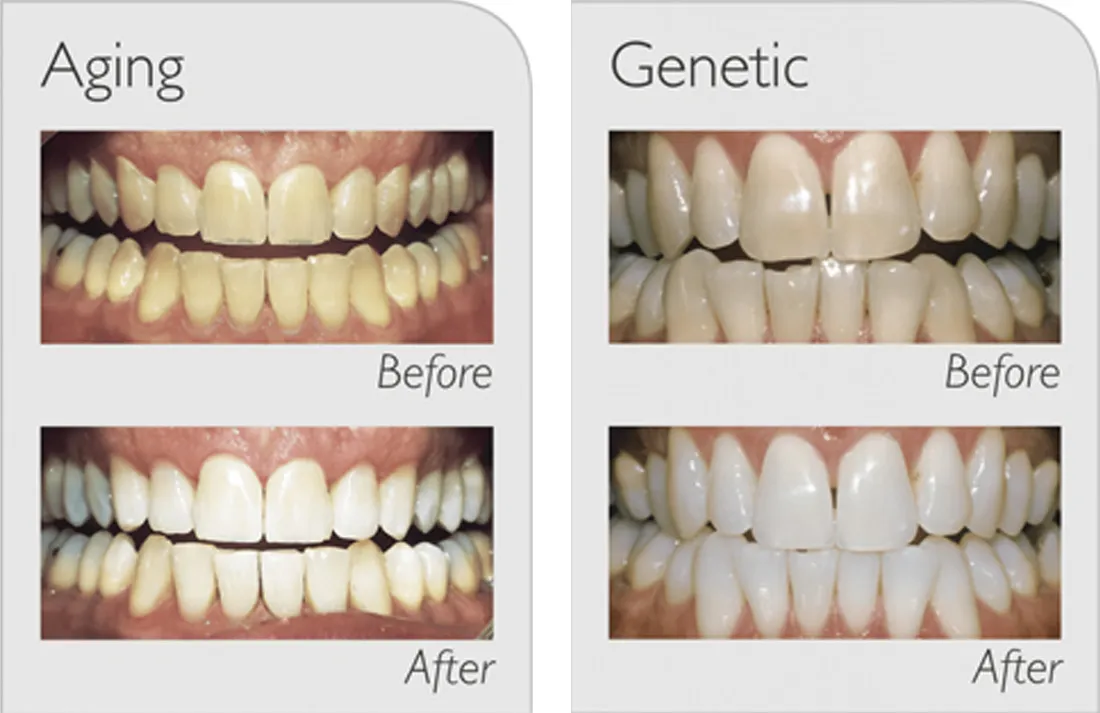
The longevity of the results from in-chair teeth whitening varies depending on several factors. On average, the effects can last from six months to three years, but this can be influenced by your lifestyle choices and oral hygiene habits. Consuming staining foods and beverages, smoking, and neglecting proper oral care can shorten the duration of the whitening effect. To extend the life of your results, follow your dentist’s recommendations, maintain good oral hygiene practices, and consider touch-up treatments. Regular dental check-ups and cleanings are also vital to monitor and maintain your brighter smile. With proper care, you can enjoy your beautifully whitened teeth for a considerable time.
